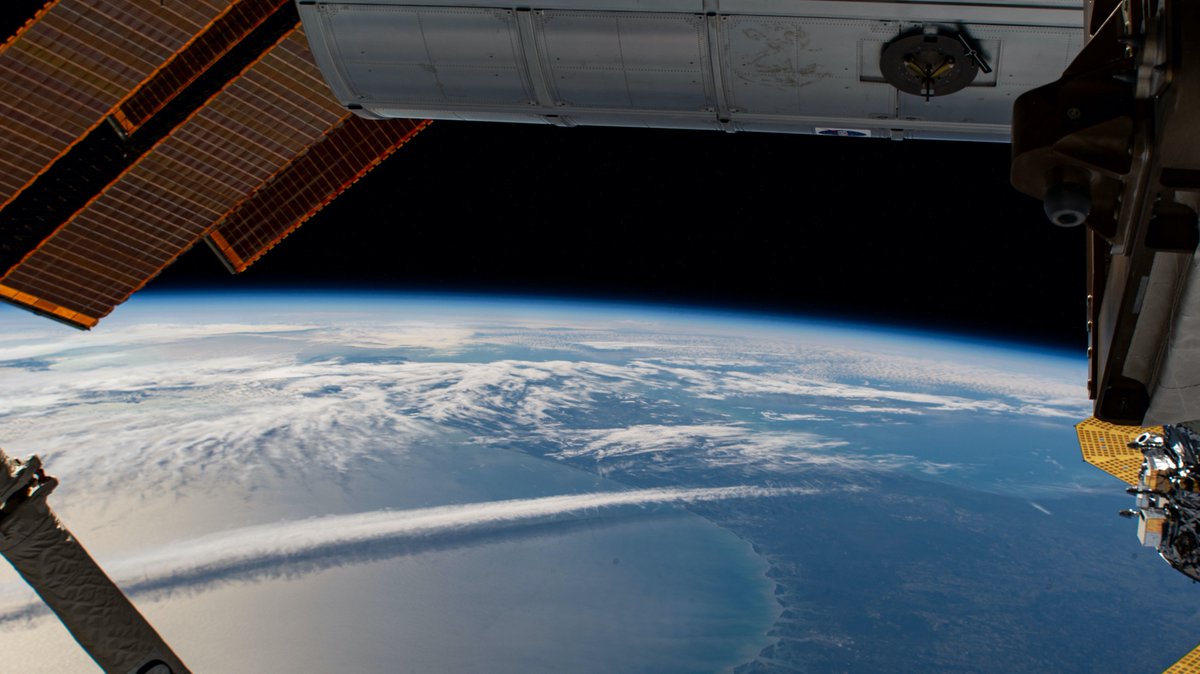"Show me the curve."  Why here it is, beautifully captured from 256 miles/413 km above Chesapeake Bay (38.8° N, 76.1° W) at 17:22 GMT on December 22, 2020.
Why here it is, beautifully captured from 256 miles/413 km above Chesapeake Bay (38.8° N, 76.1° W) at 17:22 GMT on December 22, 2020.  56mm 1/1000, f16, ISO 400.
56mm 1/1000, f16, ISO 400.
 Why here it is, beautifully captured from 256 miles/413 km above Chesapeake Bay (38.8° N, 76.1° W) at 17:22 GMT on December 22, 2020.
Why here it is, beautifully captured from 256 miles/413 km above Chesapeake Bay (38.8° N, 76.1° W) at 17:22 GMT on December 22, 2020.  56mm 1/1000, f16, ISO 400.
56mm 1/1000, f16, ISO 400.
While several effects of Earth's curvature are readily visible from ground level, an actual curved horizon isn't easily discernible until you get high up. Even a typical commercial cruising altitude of ~37,000 feet isn't high enough for a passenger to easily see a curved horizon.
For that you'd have to be considerably higher still—like over 50,000 feet, where supersonic aircraft like the Concorde used to fly. Here's an article from @OutpostMagazine about that: https://outpostmagazine.com/is-the-earth-really-flat/
Here's another for @planeandpilot by @isabelgoyer, who reports observed curvature from 51,000 feet aboard a Citation X+. https://www.planeandpilotmag.com/article/seeing-the-curvature-of-the-earth/
But even there the effect is subtle compared to the view from the Space Station, orbiting Earth 16 times a day at over 250 miles up (that's 1.32 million feet!) And while camera lenses do have distortion effects, at 56mm (like the one I posted) it's quite close to human vision.
Here's a useful diagram (source: https://earthscience.stackexchange.com/questions/7283/how-high-must-one-be-for-the-curvature-of-the-earth-to-be-visible-to-the-eye; author unknown) of why even from a commercial plane a curved horizon on our 7,917-mile-wide globe is hard to see.

 Read on Twitter
Read on Twitter



